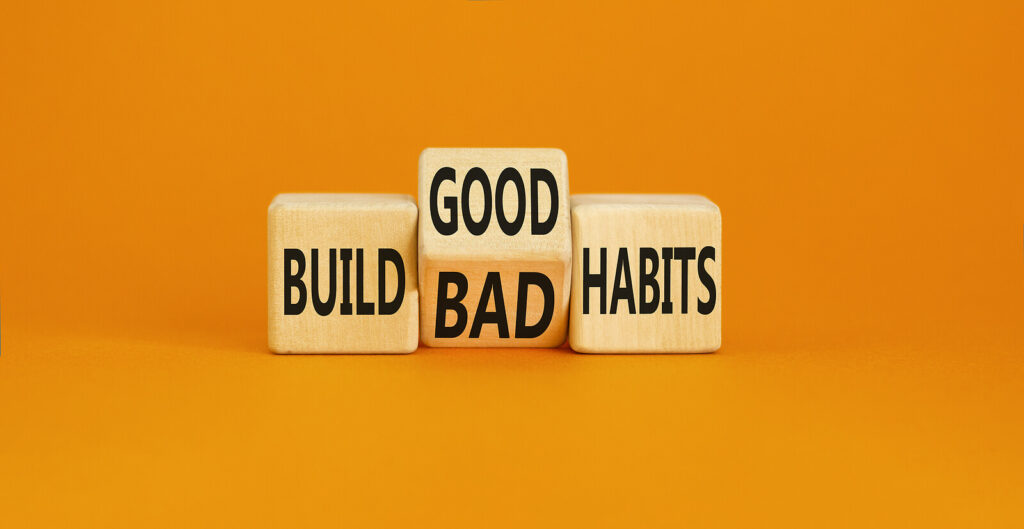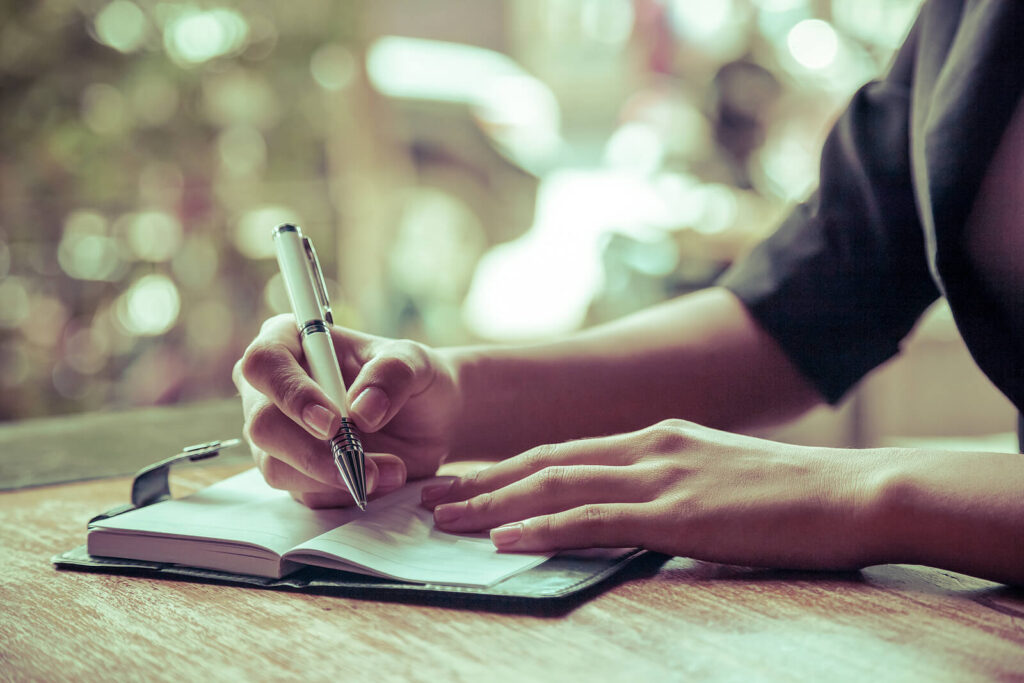Several years ago, I was taking a riding lesson, and I did something that I was not supposed to do. But it was my favorite thing to do.
 I pulled on the reins one too many times and missed going to the jump. My trainer, who knew me all too well, said, “ Why did you do that?” She had a bit of a scowl on her face because she and I both knew I would have to do it again instead of being done for the day.
I pulled on the reins one too many times and missed going to the jump. My trainer, who knew me all too well, said, “ Why did you do that?” She had a bit of a scowl on her face because she and I both knew I would have to do it again instead of being done for the day.
I answered with a sign of exacerbation with myself and the situation. But also with a hint of resignation, knowing the answer. “Because it is what I do and what I do best.” To which she responded, “Don’t do it. It is not good. Now go do the jump again without pulling on the reins in the last step.”
I would imagine that if you ride, you have had this conversation at some point in your journey with horses. Even if you do not ride, I would guess you have done something similar in your life or in whatever sport you play. Since that lesson, I have improved at pulling on the reins, but I still do it. Much to my current trainer’s chagrin. I think about this a lot because I have to work/think very hard about not doing it. You could say it is a habit.
How Did I Learn That Habit?
Not sure. However, I wanted to talk to you about changing a habit so that it will stick for real this time, not just for the first three times you use it. That would be through creating micro habits. These are tiny changes you make to your life to see long-term results. But there is also the part of recognizing how we implement this change. Although helpful, Willpower is not the only thing required to change habits. Think of all the times you have started with much willpower, and then something happens, and suddenly you realize that you have given up that willpower and go back to what was comfortable. You are not a weak person by any stretch of the imagination. Instead, you may need to change how you approach the problem. Enter micro habits. To get one to stick, we need to recognize a couple of things about habits.
There are Four Parts to Creating a Habit
- Cue the thing that triggers the process
- Craving motivates the action
- Response to the actual habit
- Reward satisfies our craving and teaches us to continue performing that response.
 So, in other words, you see an advertisement on TV for ice cream which is the cue. It cues your brain to remember the box of ice cream that is in your refrigerator. Which you now crave. Your response? It’s to go get a bowl the ice cream! Now, the reward is the ice cream tastes good and makes this habit rewarding. It makes us want to do it again.
So, in other words, you see an advertisement on TV for ice cream which is the cue. It cues your brain to remember the box of ice cream that is in your refrigerator. Which you now crave. Your response? It’s to go get a bowl the ice cream! Now, the reward is the ice cream tastes good and makes this habit rewarding. It makes us want to do it again.
- Cue: See an advertisement on TV for ice cream.
- Craving: Remember the box of ice cream in the freezer
- Response: Get a bowl of ice cream
- Reward: Ice cream tastes good and makes us want to repeat this habit.
Once something has become a habit, we are no longer fully aware of this process as it happens so fast. It’s just how we do things. It has become part of who we are. If one of the parts of this is not there, the habit will not form. Then if we want to change a habit, we need to change one part of this process. So we need to change how we think and create new habits.
So How Do You Create New Habits?
For example, say that you want to exercise more. Your new habit needs to be more specific, or you will quickly talk yourself out of that. To be more precise, you want to walk a mile every day. Then when it comes time to do that, it sounds hard and like it would take a long time. So, you talk yourself out of it in a couple of days.
What should you do? Start slowly. First, I will walk to the office door or other places I need or want to go. So when I go somewhere, I will not look for the closest parking spot. I will park anywhere and walk to the building.
This is Much More Manageable and, To Us, Doable.
Soon you will find that you are walking more and walking to do things you hadn’t before. For example, walking to get the mail or adding another block onto that walk around the block. Now the cue becomes “I need to get somewhere, and I will walk to get there”. You will be amazed at how quickly this will take hold. Then you will want to walk the mile every day and it won’t seem as hard as it did in the beginning.
Or, if you’re an equestrian, maybe you want to change to riding without stirrups. The thought of riding the whole time without stirrups makes my legs hurt. That doesn’t seem doable to me. Instead, starting off riding without stirrups for 30 seconds does. Now, every time I ride, I begin with 30 seconds of no stirrups. Soon I will find that I do more than 30 seconds then start every ride with no stirrups. Now I ride without stirrups without even thinking. It’s now a habit.
Changing this a Small Thing and Doing Another Small Thing Leads to Some Considerable Changes
It creates a micro-habit. Changing something so small can create something big. Creating these in our daily lives and even our riding lives can make massive changes. Below you will find a list of suggestions for changing habits or for creating a new habit:
 Track your progress. Please keep track of what you’re doing and how it’s going by writing things down.
Track your progress. Please keep track of what you’re doing and how it’s going by writing things down.- Believe that you will accomplish what you set out to do.
- Become aware of the excuses you tell yourself as a cover for procrastination and laziness.
- Stop comparing yourself to others and start living your own life.
- Don’t say no until you’ve thought about what you’re saying no to.
- Challenge yourself to learn something new every day.
- Drink a glass of water a day.
- Celebrate your accomplishments, no matter how small they may seem.
- Create a “to-do” list at the end of each day that lists everything you accomplished.
- Set aside time to deal with tasks you’ve been procrastinating on daily.
- Use cash instead of credit cards to limit your spending.
- Smile at people, even if you don’t know them.
- Offer to help someone out if they look like they’re struggling.
- Take the time to listen to others and pay attention to what they’re saying.
- Make time to spend with the people you love.
- Introduce yourself to the people around you instead of waiting for them to come to you.
- Break tasks down to the smallest task and then do that
These are just some examples of things you can do to create new habits.
Each of these suggestions is a way for you to start thinking about what you want to do differently. If you’re going to do something, break it down into very small pieces and attach it to something you do already. For example, connect the desired task to getting up, eating breakfast, brushing your teeth, riding your horse, or grooming your horse. This way, you will make it so that you are not thinking about the change. Instead, you are doing the action. Whether it’s riding a horse, brushing your teeth, making breakfast, or eating it. It truly is the little things in life that make all the difference.
Begin in Equine Therapy in Virginia
If you want to make some changes in your life or your riding life, I would love to connect with you about how we can accomplish that. You can learn how to change your habits slowly by breaking them down into smaller pieces from the comfort of your home via online therapy from our, Virginia-based therapy practice. To start your therapy journey, please follow these simple steps:
- Contact us by calling to schedule a free consultation
- Check out our FAQs and read more about us
- Begin accomplishing what you want!
Other Therapy Services Offered by Gray Horse Counseling
Equine Therapy is just one of the many mental health services we offer at our Powhatan, VA counseling practice. We are available for in-person help in Powhatan and online in Virginia. Our other services at Gray Horse Counseling include individual therapy, anxiety therapy, group therapy, equine sports, clinical supervision, trauma therapy and depression therapy, and more. Check out our FAQs, read about us, and contact us today to get the help you deserve!
If you want to make some changes in your life or your riding life, I would love to connect with you about how we can accomplish that. Please get in touch with me for more information or to schedule a consultation.

